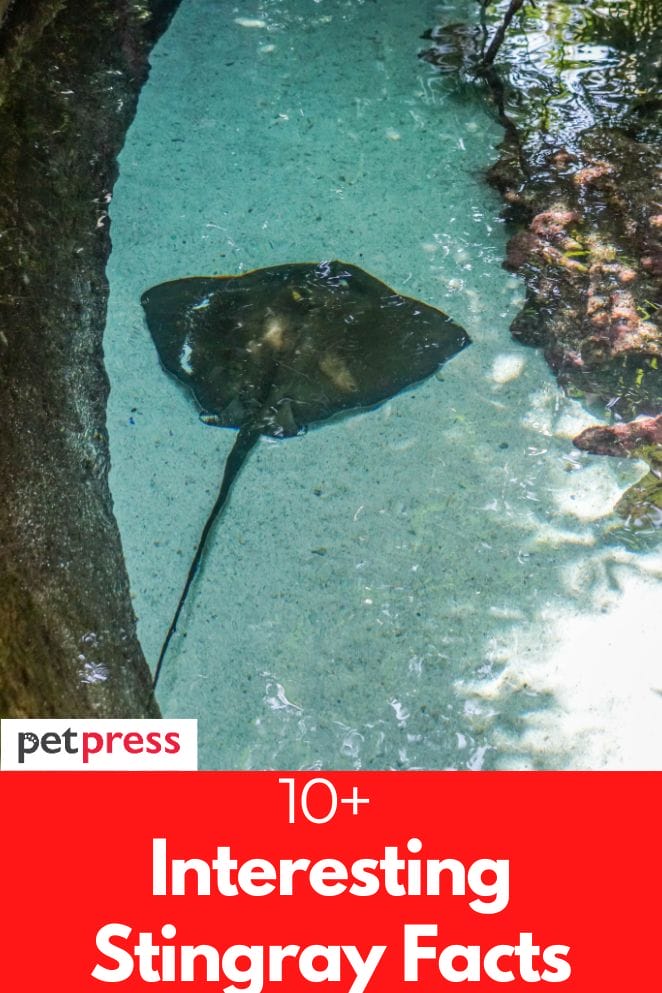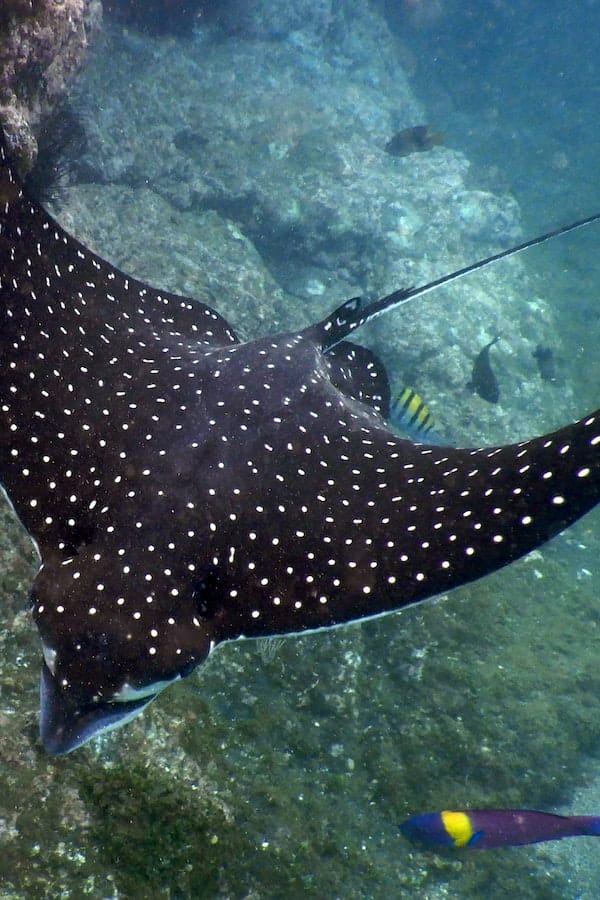
Stingrays are fascinating creatures with unique physical features and behaviors.
They inhabit various marine habitats and come in many shapes and sizes, from the giant manta ray to the small stingaree.
These animals have been around since prehistoric times and continue to captivate people today with their mysterious presence under the sea.
Here are some interesting facts about these mysterious creatures.
Fact #1: Stingrays have flat bodies and elongated tails.
Stingrays are members of the cartilaginous fish family and have flattened bodies with an elongated, whip-like tail.
Unlike most fish, stingrays do not have scales.
Instead, their bodies are covered by a thin layer of skin that is dotted with tiny denticles or scutes.
The tail has one or more stinging spines, which can cause irritation to humans and other animals if they come into contact with it.
The tail helps the stingray swim as well as defend itself from predators.
Stingrays can also use their tails to stir up the bottom of the ocean or riverbed when looking for food, such as mollusks and crustaceans.
Fact #2: Stingrays can be found all over the world.

Stingrays can be found in tropical and subtropical waters all over the world.
They can be found near coral reefs and on the seafloor in shallow coastal areas.
Some species of stingrays migrate seasonally into deeper, cooler waters, while others are sedentary and remain in one area year-round.
There are also some species that live in freshwater rivers and streams, such as the freshwater stingray.
Stingrays are an important part of many marine ecosystems and play a vital role in maintaining healthy oceans, rivers, and streams.
Fact #3: Stingrays feed on small animals like mollusks and crustaceans.
Stingrays are mainly bottom-dwelling scavengers that feed on small animals such as mollusks, crustaceans, worms, and other invertebrates.
They use their flat bodies to stir up the seafloor or riverbed in search of food. Some species of stingray may also feed on small fish, plankton, and other organic matter.
They can detect prey using their sensitive organs called ampullae of Lorenzini, which can sense electrical fields in the water.
When hunting for food, stingrays use a combination of sight and smell to find their prey.
Fact #4: Stingrays have an amazing ability to camouflage.
Stingrays are masters of disguise and have the remarkable ability to change their colors and patterns to blend into their surroundings.
This helps them avoid predators as well as find prey.
They can also flatten themselves against the seafloor, making them nearly impossible to detect.
Stingrays have a wide variety of color patterns that can range from dark browns and grays to bright yellows, blues, and greens.
Some species also have spots or stripes on their bodies that act as further camouflage in the wild.
Fact #5: Stingrays are ovoviviparous.
Stingrays are ovoviviparous, meaning that they give birth to live young rather than laying eggs.
The female stingray will produce several embryos, which develop internally in the mother’s uterus before being born.
The offspring will emerge from the mother in a thin membrane and are born fully developed.
They can then fend for themselves almost immediately, making them independent from birth. This type of reproduction is common among other cartilaginous fish, such as sharks.
- Related post: Guide And Tips – What Is a Good First Pet Fish
- Related post: How Can You Tell a Fish is Happy
Fact #6: Stingrays can live up to 25 years in the wild.

Stingrays are long-lived animals, with some species known to reach ages of up to 25 years.
In captivity, they may live even longer with proper care and nutrition.
The lifespan of a stingray depends largely on the species and environmental conditions.
Some stingrays, such as the short-tail stingray and Atlantic stingray, are known to reach greater ages than others.
Stingrays reproduce slowly and produce few offspring, making them vulnerable to population decline due to overfishing or habitat loss.
Fact #7: Stingrays are an important part of many marine ecosystems.
Stingrays are integral parts of the marine ecosystem, providing a natural balance by controlling populations of other species.
They feed on mollusks, crustaceans, and small fish, helping to keep these populations in check.
As apex predators, they also provide food for larger fish and other animals.
Stingrays are also important to many coastal communities as a source of food, recreation, and economic value through recreational fisheries and ecotourism.
By protecting stingray populations, we can help maintain healthy marine ecosystems around the world.
Fact #8: Stingrays are vulnerable to overfishing and habitat loss.
Stingrays, like many other marine species, are increasingly threatened by human activities such as overfishing and coastal development.
Overfishing of stingrays for their meat or fins has drastically reduced some populations and is a major threat to their survival.
Additionally, coastal development has caused extensive habitat loss for many stingray species.
These activities have led to population declines in many parts of the world, making it increasingly important to protect these animals and their habitats.
Fact #9: Stingrays are protected in some areas.
In recent years, there have been increasing efforts to protect stingray populations from overfishing and habitat loss.
Many countries and territories have enacted laws that protect these animals from certain fishing practices or grant them protected status.
Additionally, some areas have established protected zones, such as marine reserves and sanctuaries, to provide refuge for stingrays and other marine life.
These efforts help ensure that these animals will continue to be a part of our oceans for generations to come.
Fact #10: Stingrays are fascinating creatures worthy of respect.

Stingrays are truly remarkable creatures, capable of living up to 25 years in the wild and giving birth to live young.
Despite their intimidating appearance, they are gentle and non-aggressive animals that rarely pose a threat to humans.
They play important roles in marine ecosystems, helping to maintain balance and providing food for larger predators.
It is important that we recognize the value of stingrays and make efforts to protect them from overfishing and habitat loss.
Fact #11: Stingrays have cultural significance in many parts of the world.
Stingrays are found in almost every ocean and have long been a part of human culture.
In some cultures, stingray imagery is often used as a symbol of protection and strength.
In some parts of the world, stingrays are also important sources of food and income for fishing communities.
For many people around the world, stingrays represent a connection to their cultural history and identity.
Overall, stingrays are an integral part of marine ecosystems and have a fascinating place in human culture.
By protecting their populations and habitats, we can help ensure that they continue to be a part of our oceans for generations to come.


GIPHY App Key not set. Please check settings